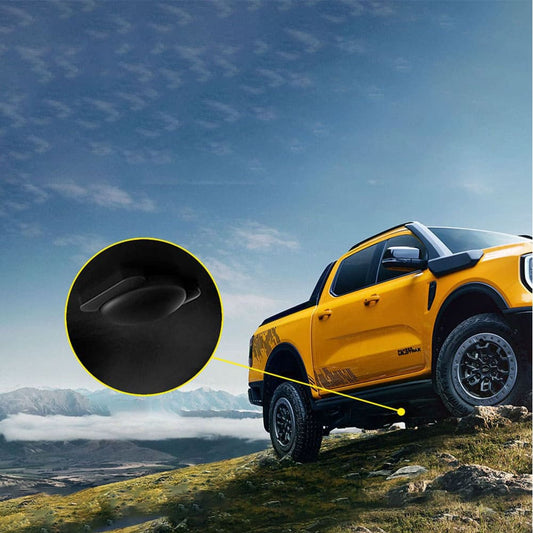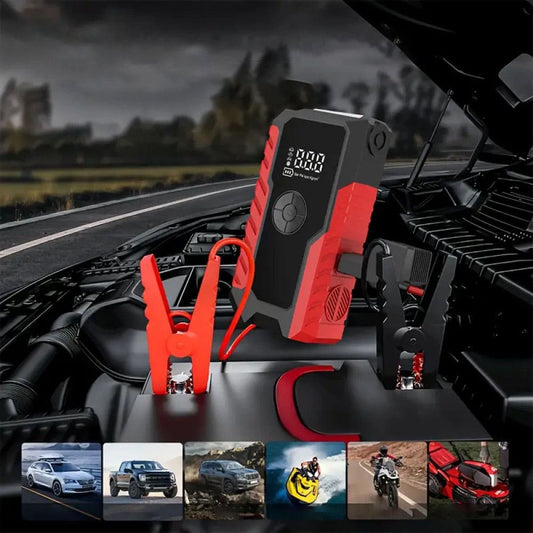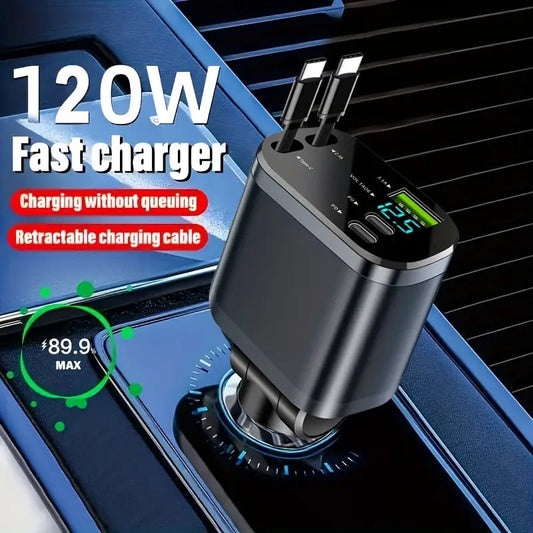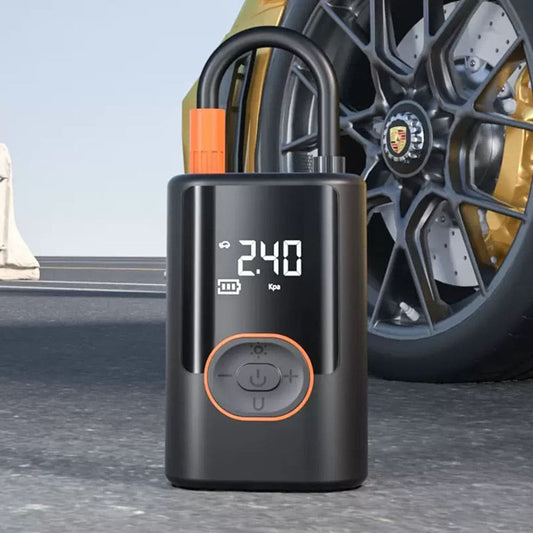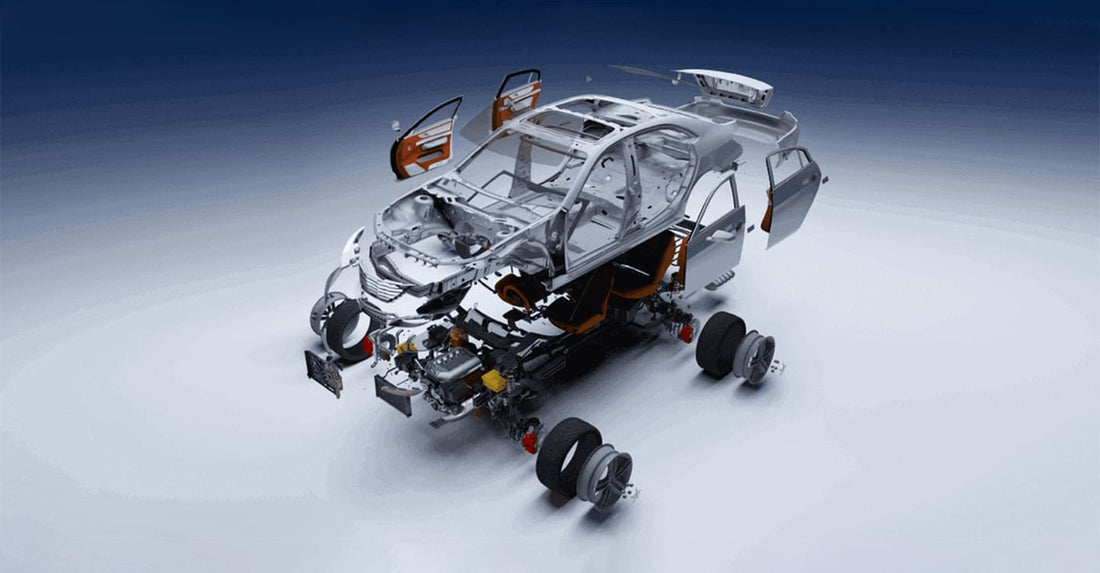
Essential Car Parts for Beginners: A Comprehensive Guide
Share
When you're just starting as a driver, learning the basics of car maintenance and understanding key vehicle parts can save you time, money, and stress. From starting your engine to maintaining your car, knowing how each component works is crucial for both safety and smooth operation. Whether you're a first-time car owner or just looking to refresh your knowledge, this guide covers the essential car parts every beginner should familiarize themselves with.
Key Car Components: A Beginner’s Overview
Every car has essential components that work in harmony to ensure smooth driving. Understanding these parts not only helps you in day-to-day driving but also makes car repairs and troubleshooting easier. Here’s a simplified breakdown of the car parts every beginner should know:
1. Engine
The engine is the heart of your vehicle. It converts fuel into energy through combustion, turning the wheels and making your car move. The more you know about your engine’s function, the better equipped you’ll be to handle any potential issues.
2. Transmission (Gearbox)
The transmission takes the engine’s power and adjusts the vehicle's speed and force. Whether it's an automatic or manual transmission, understanding this system is key to driving efficiently and smoothly.
3. Battery
Your car’s battery powers the engine and electrical systems when the engine is off. A dead battery means your car won’t start, so knowing how to maintain or replace it is crucial.
4. Alternator
Once your car is running, the alternator generates electricity, powering your car’s electrical systems and recharging the battery. A failing alternator can cause your battery to lose charge, leading to electrical problems.
5. Radiator
Your radiator helps prevent the engine from overheating by circulating coolant to maintain an optimal temperature. Regular checks can prevent engine damage caused by overheating.
6. Brakes
The brake system is vital for your safety. It uses friction to slow down or stop the vehicle and includes essential features like Anti-lock Braking Systems (ABS) to prevent skidding.
7. Suspension System
This system smooths out the ride by absorbing shocks from uneven roads, ensuring your tires stay in contact with the road, which improves handling and comfort.
8. Exhaust System
The exhaust system removes harmful gases produced by the engine. It also reduces noise and controls pollution, helping you meet environmental standards.
9. Steering System
The steering system allows you to control your car’s direction. Modern cars use power steering to make turning the wheel easier.
10. Tires
Your tires provide the only point of contact with the road, so maintaining them is crucial for safety. Ensure proper tire pressure, tread depth, and alignment to maximize driving safety.
11. Fuel Tank
The fuel tank stores gasoline or diesel for your car. Keeping it in good condition ensures that the fuel pump can deliver fuel to the engine smoothly.
12. Fuel Pump
The fuel pump moves fuel from the tank to the engine. Without a functioning fuel pump, your car won’t run. Regular checks can prevent issues like stalling or difficulty starting.
13. Fuel Injectors
Fuel injectors deliver fuel to the engine in a fine mist. Properly functioning injectors ensure better fuel efficiency and smoother engine operation.
14. Air Filter
The air filter keeps dirt and debris from entering the engine. A clean filter improves fuel efficiency and performance, while a clogged one can cause engine problems.
15. Oil Filter
The oil filter keeps the engine oil clean by trapping dirt and metal particles. Regular oil and filter changes ensure that your engine runs smoothly and efficiently.
16. Timing Belt/Chain
This crucial part ensures the engine’s valves open and close at the right time. A worn or broken timing belt can lead to major engine damage, so regular replacement is essential.
17. Spark Plugs
Spark plugs ignite the air-fuel mixture in the engine. Replacing old or worn spark plugs ensures smooth engine starts and better fuel efficiency.
18. Drive Shaft
In rear-wheel and all-wheel drive cars, the drive shaft delivers power from the engine to the wheels, allowing your car to move. It must be balanced to prevent vibrations.
19. Differential
The differential allows the wheels to rotate at different speeds, essential for making turns. It also distributes power efficiently between the wheels for better handling.
20. Clutch
In manual vehicles, the clutch allows you to disengage the engine from the transmission when changing gears. A healthy clutch is key to smooth shifting and proper vehicle control.
21. Gear Shifter
The gear shifter enables you to change gears, controlling your vehicle’s speed and performance. Whether manual or automatic, it’s the interface for gear control.
22. Catalytic Converter
The catalytic converter reduces harmful emissions from the exhaust gases. It plays a crucial role in meeting environmental regulations by converting pollutants into safer gases.
23. Muffler
The muffler minimizes the noise produced by the engine’s exhaust system. It also helps maintain proper exhaust pressure, which is essential for engine efficiency.
24. Cabin Air Filter
This filter cleans the air entering your vehicle's cabin, removing dust, pollen, and other pollutants, ensuring that you breathe clean air while driving.
25. Dashboard (Instrument Cluster)
Your dashboard displays essential information about your car’s performance, such as speed, fuel level, and engine temperature. It helps you monitor the vehicle’s health and address potential issues early.
Understanding these car parts and their functions will not only help you become a more confident driver but also save you money on repairs and maintenance. Regularly checking the condition of these components and addressing problems early can extend the life of your car.

